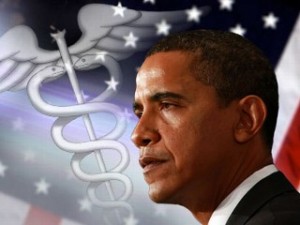 By George E. Curry, NNPA Columnist
By George E. Curry, NNPA Columnist
Many ardent conservatives are critical of the Affordable Care Act or what they derisively call “Obamacare.” But what are they proposing that proves that they care about uninsured Americans?
The Tampa Bay Times’ “Pundit Fact” team discovered some interesting findings when they approached that question indirectly. Specifically, the newspaper looked at the main Republican alternatives to the Affordable Care Act and the patient diagnosis under the GOP proposals was not encouraging.
“Not all but most of the nine bills on our list use the tax code to put more money in citizens’ pockets on the condition that the money will be spent on health care,” the newspaper stated. “We found three basic approaches that potentially address insurance affordability.”
· Overhauling health care tax deductions;
· Refundable tax credits and
· Health Savings Accounts
On overhauling health care tax deductions, the newspaper said, “The most generous proposal comes from the conservative Republican Study Committee, which put forward a bill with 100 cosponsors. H.R. 3121 would give a $7,500 deduction to individuals and a $20,000 deduction to families.
“We saw two big catches here. You would need to have insurance in the first place. Plus, the bill would eliminate the biggest tax break households enjoy today, the portion of their premiums paid by their employer. Getting rid of that $170 billion tax benefit would be a tough sell and a dramatic change to employer-provided insurance.”
As for the refundable tax credits, it was noted that they “are like tax deductions, with the big difference that you can claim the credit even if you don’t have taxable income. H.R. 2300 from Rep. Tom Price, R-Ga., offers a maximum tax credit of $5,000 for families making up to 200 percent of the federal poverty level, or about $47,000 a year.”
The paper said, “The proposal from Price would make credits payable in advance. In other words, you could use the federal credit even if you didn’t have the money up front to pay for insurance.
“While the details are different, this resembles the program put forward by President George W. Bush. A 2005 study of the Bush plan by the Tax Policy Center, a joint project by the Urban Institute and the Brookings Institution, found that ‘lower-income individuals experience the largest declines in uninsurance rates’ under the Bush proposal.
“However, of the 45 million people uninsured then, Bush’s $3,000 tax credit plan would have helped only about 2 million people who made less than 200 percent of federal poverty and just a bit over 3 million overall.”
The third option – Health Savings Accounts – fared no better.
The Tampa paper said, “Thomas Buchmueller, a health economist at the University of Michigan, said it is a major undertaking to provide insurance to those who lack the money to pay for it.
“’Tinkering with tax deductions and making health savings accounts more attractive is not going to change that basic fact,’ Buchmueller said. ‘Roughly half of the Affordable Care Act coverage gains come from expanding Medicaid. I don’t see anything in these proposals that would do much for the people who will gain Medicaid under the ACA.’”
Like so many issues, Democrats and Republicans differ in fundamental approaches.
“One of the widest gaps between Democrats and Republicans is the basic understanding of what it means to offer a plan to people of limited means,” the Florida newspaper observed. “For Democrats, a plan is an identified insurance policy, whether public, as in expanded Medicaid, or private, as in buying subsidized private insurance through a web-based, highly regulated marketplace. For Republicans, a plan is anything that makes buying insurance more affordable, however the person finds the policy.”
After a terrible 2-month rollout, the Obama administration finally may be in a position to silence some of its legitimate critics.
A report issued Sunday by the Health and Human Services Administration disclosed that the primary website, HealthCare.gov, has been successfully overhauled and is now able to support more than 800,000 consumer visits a day.
Among the improvement cited:
• The deployment of 12 large, dedicated servers;
• Significantly upgrading memory to improve response time;
• Reducing response time from around 8 seconds in October to well under 1 second;
• Reducing the error rate from approximately 6 percent in November to .75 or three quarters of one percent; and
• Expanding the amount of time the system is up from 42.9 percent in October to above 90 percent.
“The new management system and instrumentation have helped improve site stability, lower the error rating below 1%, increase capacity to allow 50,000 concurrent users to simultaneously use the site and will help drive continuous improvement on the site,” the report stated. “While we strive to innovate and improve our outreach and systems for reaching consumers, we believe we have met the goal of having a system that will work smoothly for the vast majority of users.”




